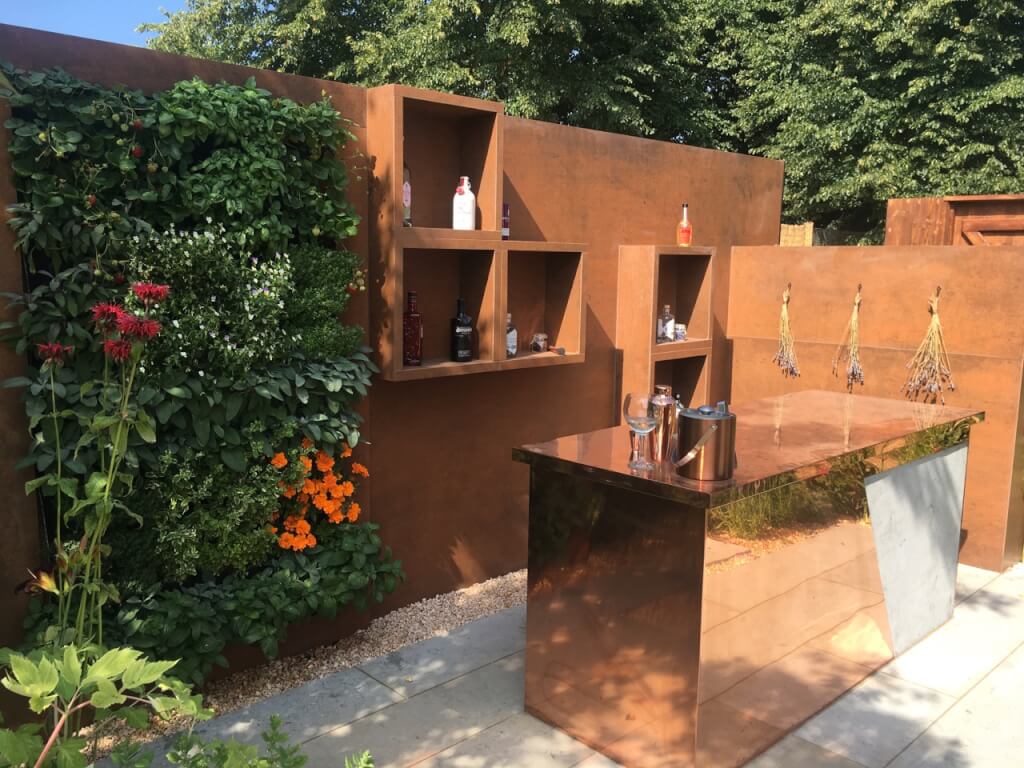When designing a garden to become an extension of a house or 'outside room' there are some key areas you need to factor in. I thought it might be helpful to provide a guide as to how to achieve this, leading by example, of course! So why not turn your garden into an entertaining space?
It's easy to confuse outdoor living with sprawling block-paved patios, gas burners and hard landscaping galore. There is a big difference between a standard flagged pub beer garden with wooden benches and of a carefully designed outdoor living garden at home. It is not to say one is wrong and the other right. However, your home doesn't need to manage hundreds of patrons, spilled drinks and dirty shoes every summer's day. You have the ability to have something far more refined and horticulturally interesting.
Designing a garden as a room guide
- Work out the gardens function
- Outdoor living design tips
- Seating
- Paving and surfaces
- Lighting
- Food, drink & Fun!
- Planting choices for an outdoor living space
- Contemporary outdoor living design example
This guide will show you how I turned a blank garden into the breathtaking outdoor living garden below.
What are you going to use the garden area for?
I always start with the functional parts of an outdoor living space, such as the seating size, cooking or recreational areas. I ask 'How many people will use it frequently?' rather than 'What is the maximum number of seats you need'. It is better to have a perfectly proportioned garden 95% of the time for everyday use, than a disproportionate garden that has wasted space just so it allows you to have every single relative and friend seated for one evening a year!
If you're going to use it primarily for sitting and relaxing it is a good idea to check the aspect of the site. This means that you don't end up with a seating area that is predominantly in the shade or conversely staring straight at the sun.
By planning seating positions in advance you can avoid mistakes. I like to also consider views and if the space is overlooked, find a location for seating that offers some privacy. The design below used standard trees to help break up neighbouring views when relaxing in the garden. It's also a good idea to create a scale cut out of your seating which you can then move around your design to see which position works best.
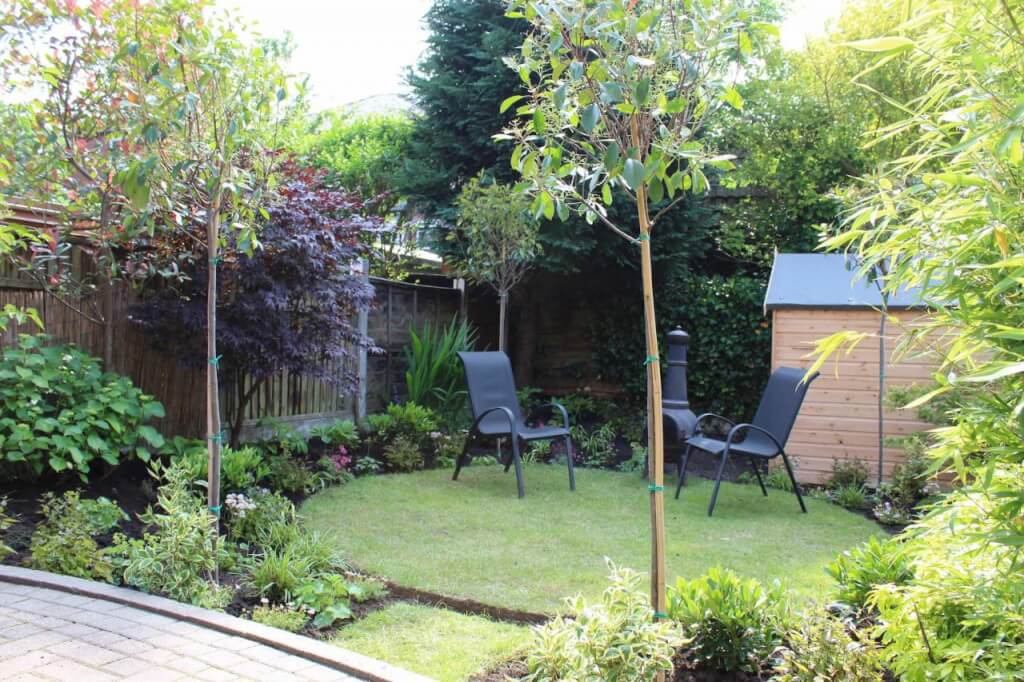
These chairs can be moved around the garden as the sun travels around the property. The standard trees offer privacy.
When cooking outdoors it is worthwhile considering whether the BBQ or stove will be left out all year. If not, what is the access like to the nearest shed or garage? If it's a fixed BBQ is it close enough to the kitchen to prevent using it becoming a chore? Can you get around it to clean it or is it wedged up against a fence or hedge? This is where having a solid garden design will pay dividends.
Outdoor Living Design Tips
Once you have the function, layout and planting arrangements worked out for your outdoor living area you're nearly there. Before you jump straight in there are also a few other garden design tips to ensure success. These tips can give your garden a real wow factor. Even if you have an existing design these handy design tips can help elevate a design. Below are my top tips for making the most out of your outdoor living area at all times of the day, any day of the year!
1. Plan Seating
Now you have a couple of choices with seating whether it be free standing or inbuilt. Let us start with free standing.
The benefits are you can move it around and if over the years it needs replacing it is much easier. Again think of how many people you're likely to have most days in the garden. It's better to have a seating area in proportion to the garden than fill the entire garden with seats galore. If you do have that huge summer party fold-out chairs are fine for that once a year event!
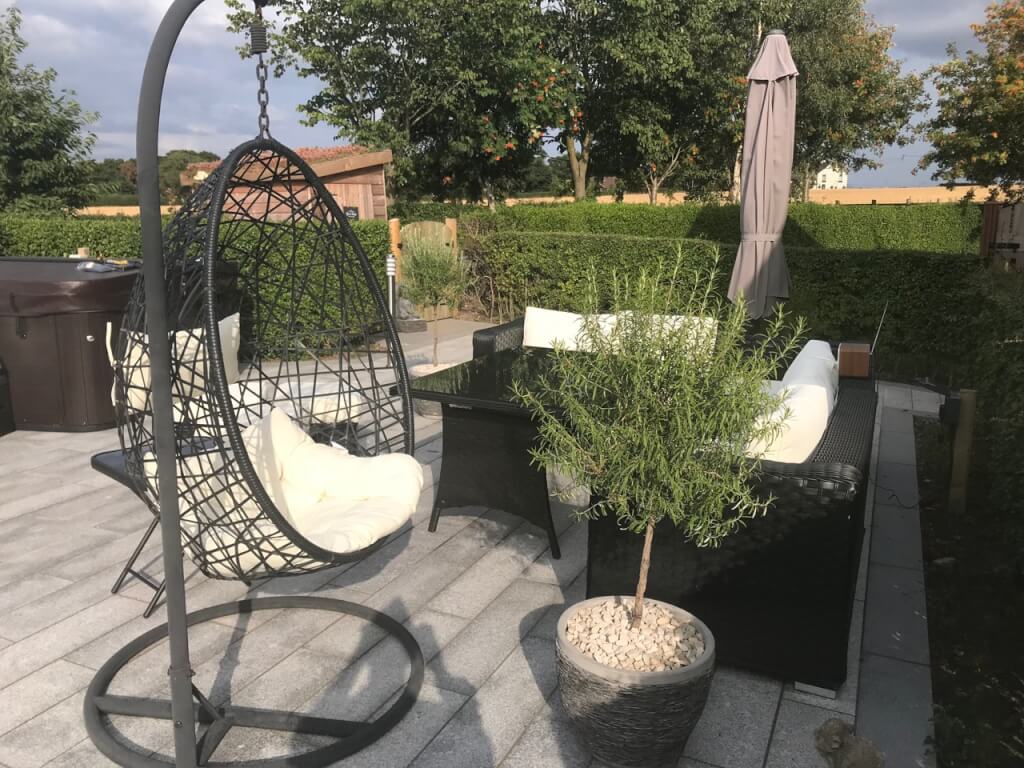
Visiting a garden centre is a good idea before you order any garden furniture. That way you can take your measurements and see what options you have. You need to be able to walk around chairs and tables, so try not to shoe horn them in. Space and room to breathe are key! Modular furniture is a good idea for larger spaces. This means it can be reconfigured depending on how many guests you have and even split into two if you're going for a real party theme. This stops everyone from cramming around one table and can relax the atmosphere more.
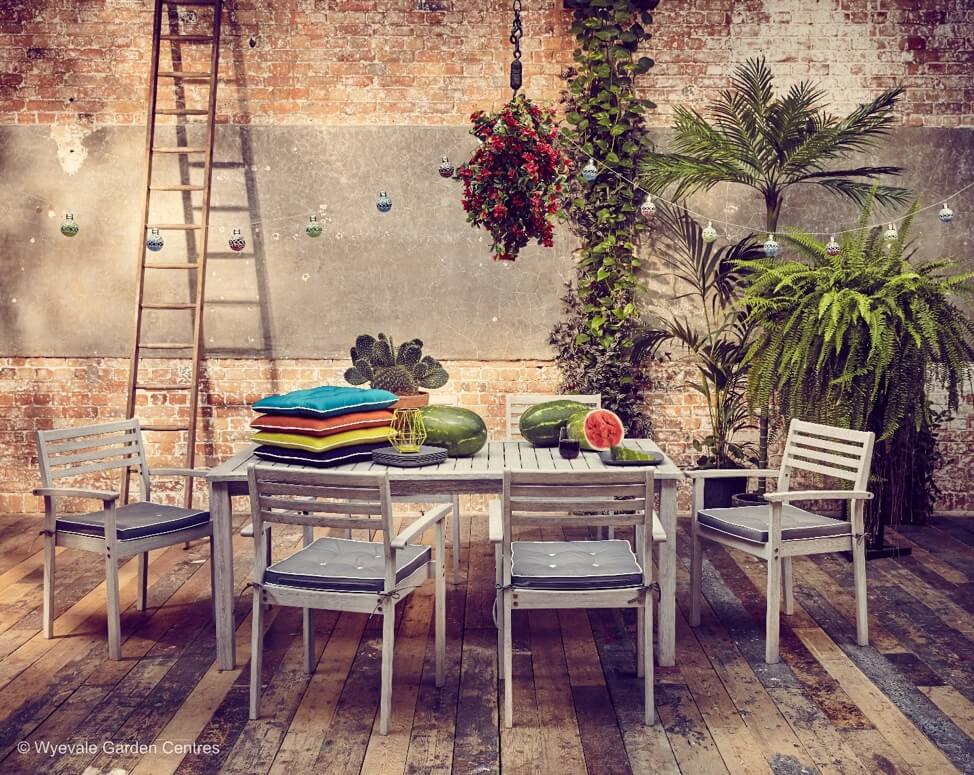
Inbuilt seating is an excellent option in small gardens as it removes the need for storage of seats and chairs. It can also be used as a beautiful design feature, such as inbuilt benches. You need to really consider inbuilt seating. Usually, it's there for temporary rest, ie to stop and enjoy part of the garden. Without cushions, it is not going to be comfortable for a long night of drinks and nibbles. So bare that in mind. I designed the bench below for a morning brew before setting off to work, where the client could enjoy the scent of lavender, fondle the Stipa and ponder for 5 to 10 minutes.
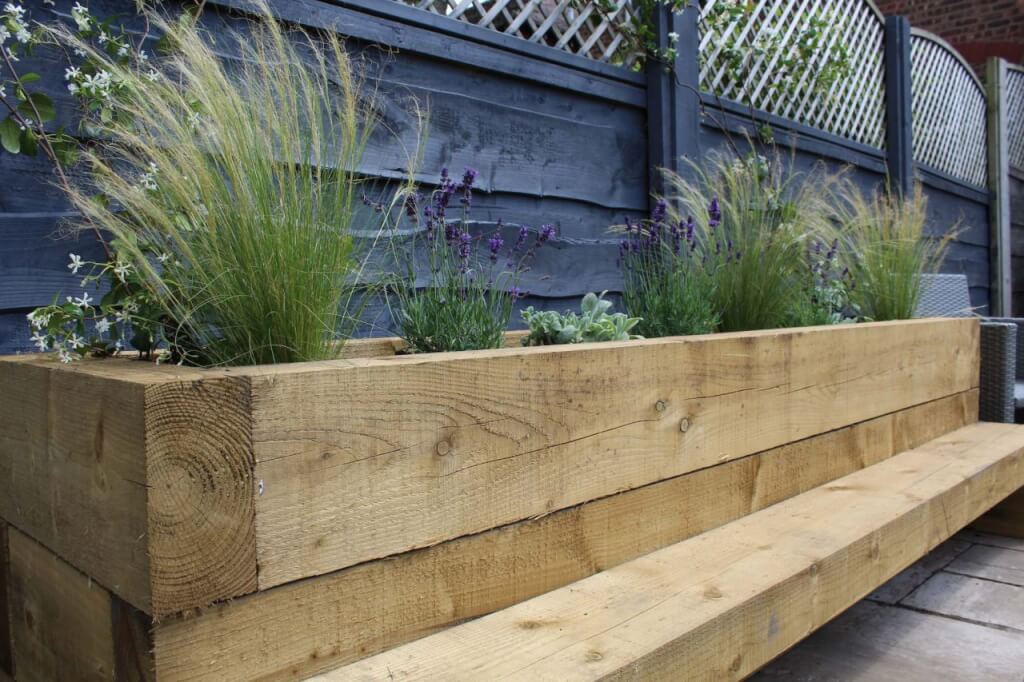
Inbuilt seating is a great functional design feature above.
Keeping garden furniture in top condition is easier than you think and I would recommend yearly maintenance to ensure your furniture lasts for years and years. There's a handy guide on garden furniture maintenance here.
2. Choose Paving and surfaces
It is worthwhile considering your material choices for hard landscaping. Whilst gravel may be a cheaper alternative to real stone paving, debris, high heels and spilt drinks can become a problem. Not to mention you may need to brush and or weed it more frequently than you anticipated! You want to have a surface that's able to take a bit of abuse, such as the odd greasy burger falling on it or knocked over a glass of fizz!
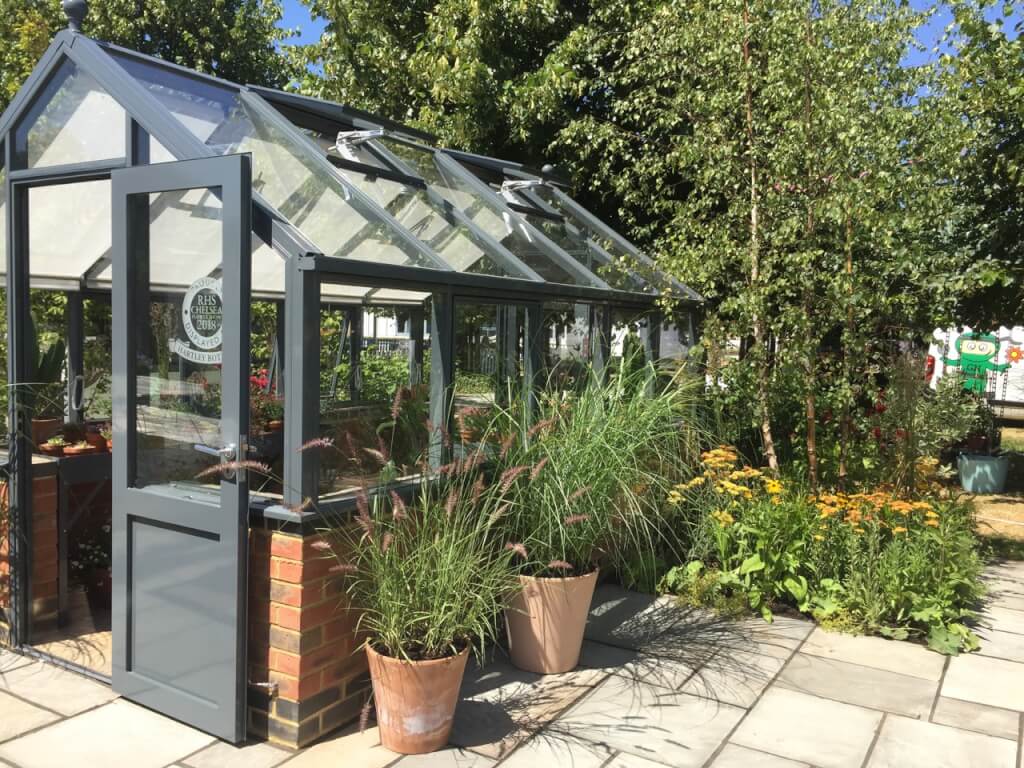
Indian stone shown above is a popular choice as it blends with most colours and textures.
If you want to make a garden look bigger then contemporary paving slabs are the answer. Using thin wide pavers can make a garden look far bigger than it actually is. You can also offset the angle of your slabs to elongate the garden even more!
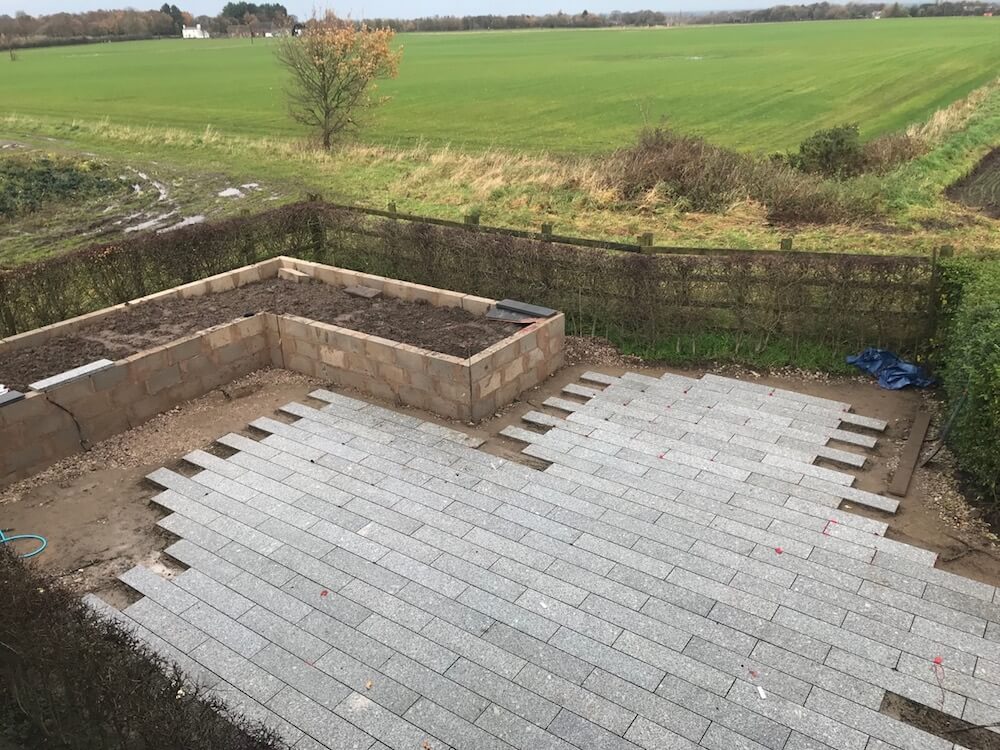
See how these granite pavers stretch out the garden once laid?
Another top tip is to use really large paving stones in a smaller garden which conversely can help it look even bigger. Gloss finish surfaces like porcelain tiles can help bounce light around a garden and give a really slick feel to the outdoor space.
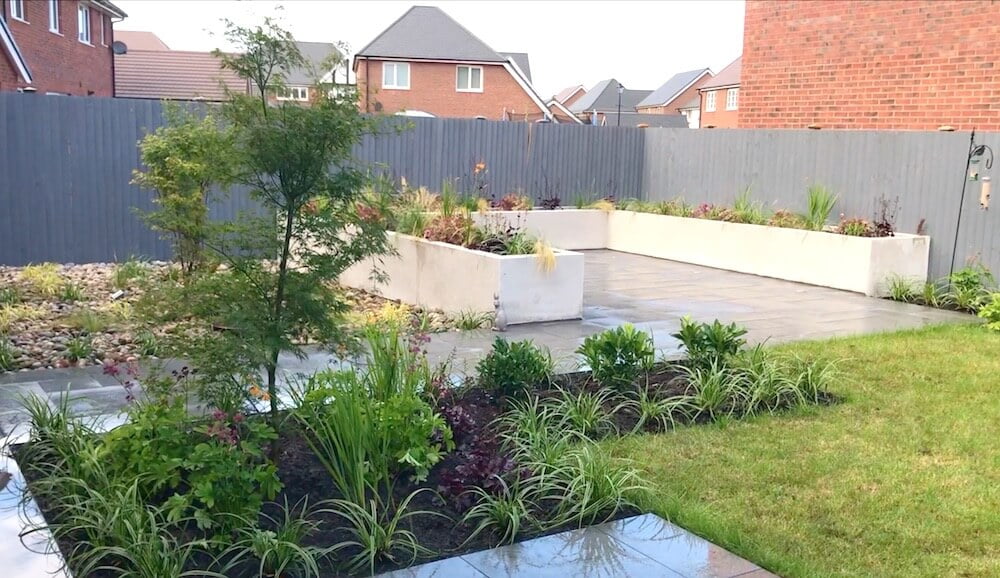
See how these Grey Porcelain tiles reflect the light in the garden?
3. Add Lighting to the garden design
By adding a lighting plan to your outdoor garden room you ensure that you can use it day or night. Lighting is a really underappreciated feature in professional garden design. Carefully placed uplighters, downlighters and bollards can really bring a garden to life after dusk. That means that you can enjoy your outdoor living room at any time of the day!
I always recommend putting together a lighting plan such as the one below. It helps you really think through what effect you want and enables easier quotes from electricians.
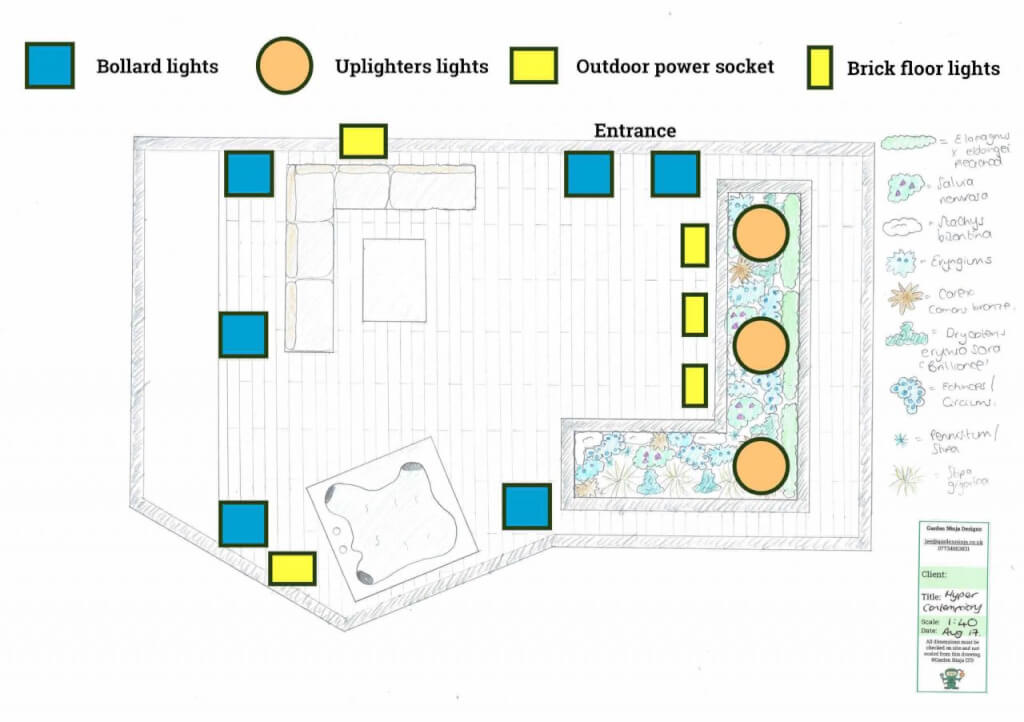
4. Consider areas for food, drink and fun!
Let's not forget that you need to also incorporate the fun bits into the outdoor space. An outdoor eating area is often a good idea, such as a BBQ, table for drinks or even a hot tub if you want a real wow factor! Incorporating outdoor speakers for a hidden music system is also another nifty idea for an outdoor space. When planning your garden you will need to consider electric points for any hot tubs or powered systems. Again use the lighting plan format for these as seen above.
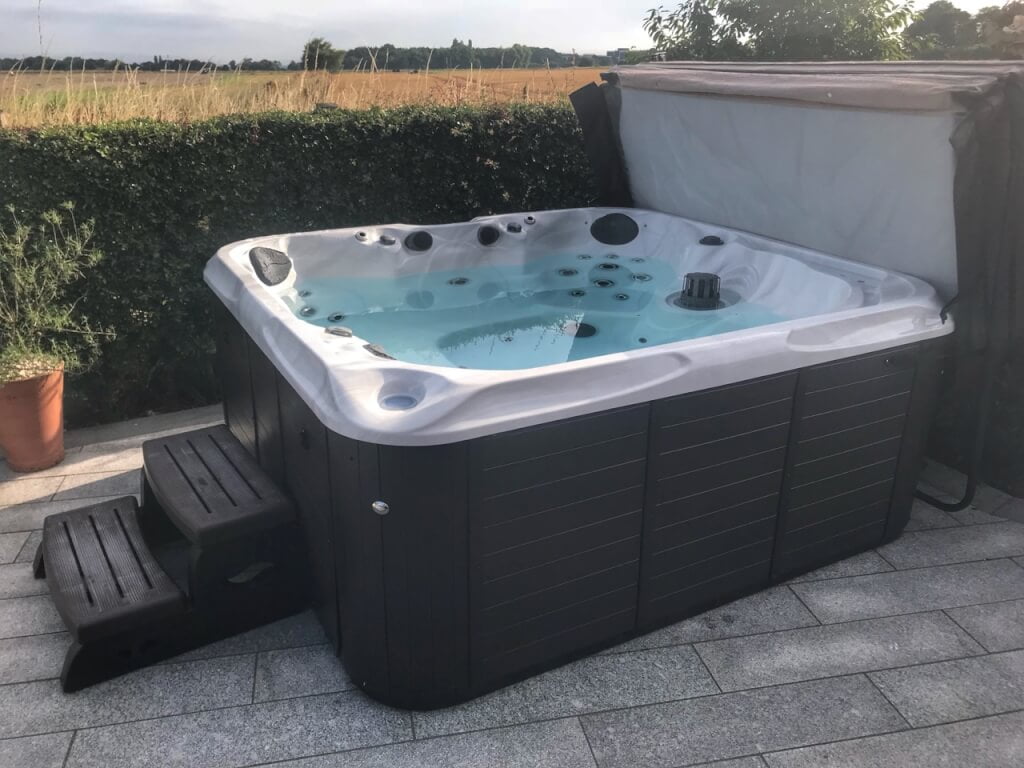
Planting Choices for Year-Round Interest
With outdoor living areas, it's wise to choose a planting scheme that is robust and offers year-round interest. That doesn't just mean lots of slow-growing evergreen shrubs. Creating a planting plan that has seasonality and interest means that the beautiful area you're creating will be just as appealing in summer as it is for a chilly New Year's Eve bash wrapped up warm with a fire going and champagne on ice!
Choose plants that:
- Have year-round interest
- Structure plants to give some height or drama
- Groundcover plants which will help soften edges
- Sensory plants with texture or scent
- Herbaceous perennials that come back year after year
- Trees or screening for some height.
- Group plants for maximum effect try to avoid pick and mix planting
- Choose the right plant for the aspect, soil and exposure
By factoring in the site aspect, shade, soil conditions you can create a planting scheme that will thrive in your area. One thing people tend to miss out on is the varied heights of plants. You want some taller plants, maybe topiary trees like pleached or standards, taller herbaceous plants, grasses and then ground cover plants, Geraniums are always a winner. That way you have something of beauty no matter where your eye line is!
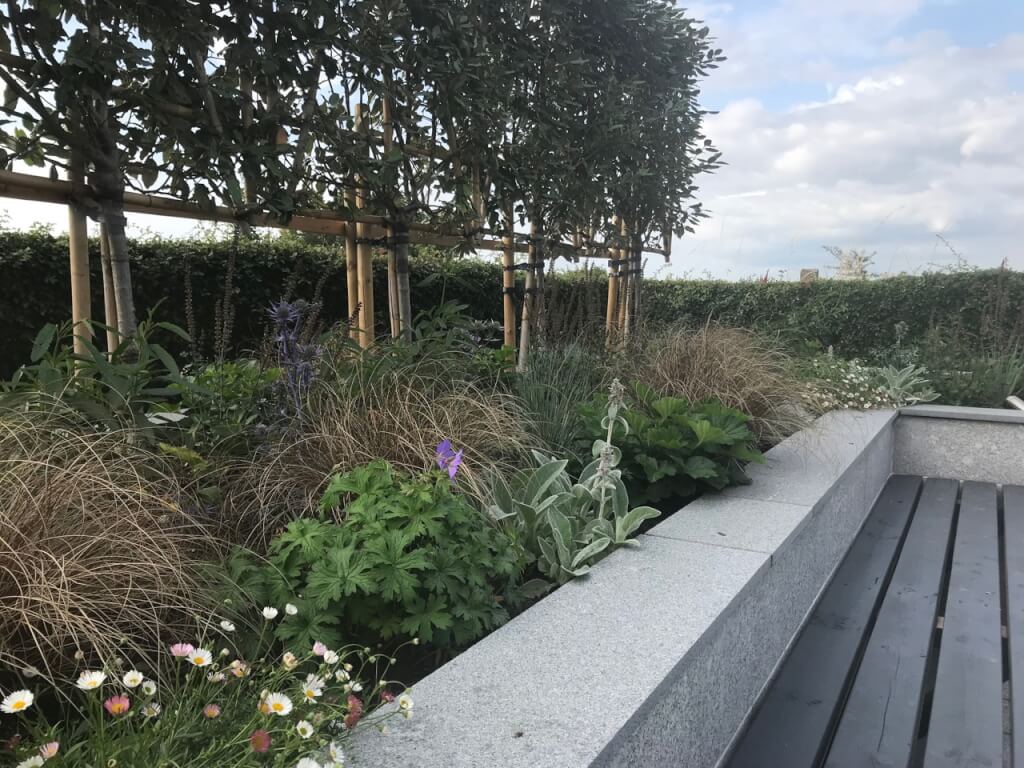
The location of the outdoor living design example means its very exposed, which is why a raised bed and planting area at one end was one way to give some protection and refuge from the wind. The concept of 'refuge' is really important in garden design, especially in spaces that feel too open or vast. By designing with a refuge in mind it helps remove that uncomfortable feeling that can arise when you feel exposed in a larger space.
I designed a planting scheme that has a coastal theme. Choosing plants that are hardy enough to withstand colder winter winds and also full sun in summer. This coupled with some evergreen pleached trees, Elaeagnus-x-ebbingeifull (Oleaster), would give me the height I needed for shelter on the longer edge of the raised bed. Coppery tones from Carex 'Coman's Bronze' and bright blues such as Eryngium planum 'Blue Hobbit' mix really well together for that beachy feel.

The full planting scheme is listed below for the Outdoor Living Room.
Trees for Privacy
- Elaeagnus-x-ebbingeifull (Pleached)
Ground Cover Plants
- Geranium ‘Blue Cloud’
- Geum coccineum 'Cooky'
- Geum 'Totally Tangerine'
- Geum 'Lemon drops'
- Erigeron karvinskianus
Texture Plants & Grasses
- Carex 'Comans bronze'
- Festuca glauca 'Elijah Blue'
- Helictotrichon sempervirens
- Nepeta 'Walkers Low'
- Stachys bizantina
Statement Plants
- Eryngium 'Blue Hobbit'
- Eryngium 'Big blue'
- Eryngium giganticum 'Miss Wilmots Ghost'
- Eryngium alpinum
- Salvia nemrosa 'Caradonna'
- Verbascum 'Gainsborough'
Contemporary Outdoor Living Design Example
I have recently designed and been working on an outdoor living room for a very demanding client, me! It's quite a unique site in that it backs onto fields and has unbroken views of Lancashire. It's an absolutely beautiful spot, but for somewhere to sit relax and socialise the views can actually be quite distracting. What on earth you may say! Well, having such a broad vista gives the feeling of being exposed which doesn't lend itself to a safe relaxing space. Too much of a good thing, which I never thought I'd say.

The space before the transformation.
The design I created had to accommodate a seating area, hot tub, cooking space and a gardening space. It was adjacent to the house and kitchen so needed generous access in and outside alongside a movable BBQ. I also wanted to incorporate lighting so that the space worked day or night. A real multifunctional all year round space.
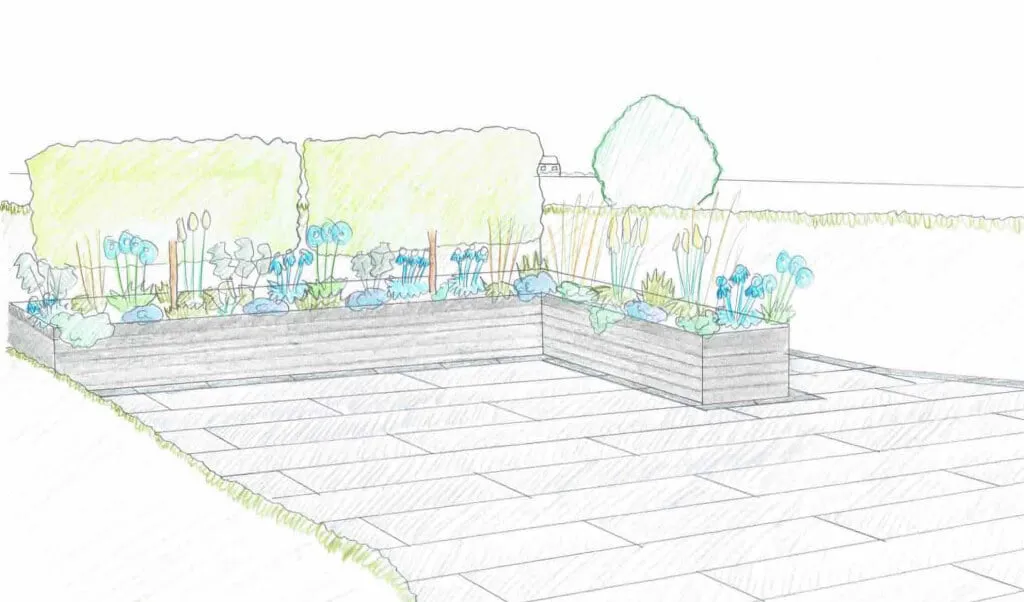
My concept idea was to create something really modern, given the natural surroundings, to almost emphasise both the beautiful landscapes informality against the formal contemporary structure. A complete contrast; using one to exaggerate the other. I also wanted to use a natural paving stone and chose grey granite for its hardwearing and sometimes brutal appearance. This would ensure that it was incredibly hardwearing and could cope with an influx of guests and maybe after hours dancing! It would also be fine in colder weather if sitting outside with a firepit for warmth or even if it was slightly damp outside as its non slip. By using a really contemporary thin granite paver it gave the space the illusion of making it feel much wider than it is and draws the eye to the raised bed.
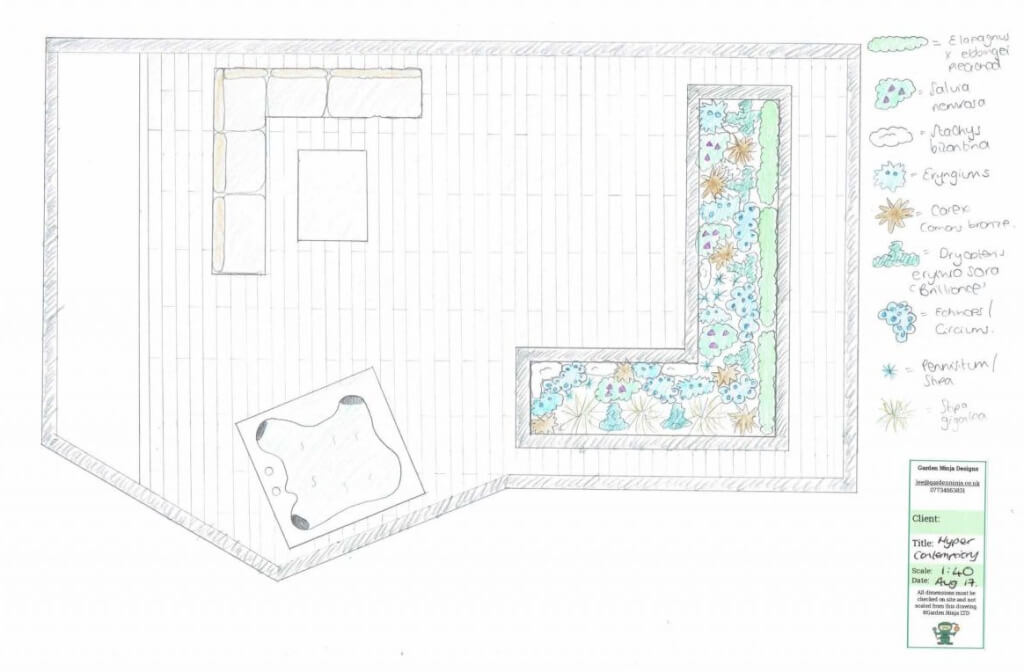
The plan view of the space with furniture and hot tub to scale above.
I'm really pleased with the end results of this garden. I've turned a plain space into something with a wow factor. It has modular seating to accommodate a number of guests and adds some privacy to the exposed sight. The planting lends itself to the coastal location and will give a variety of looks throughout the year. Lastly lighting and carefully proportioning the garden makes it feel nested and allow it to be used day or night all year round.
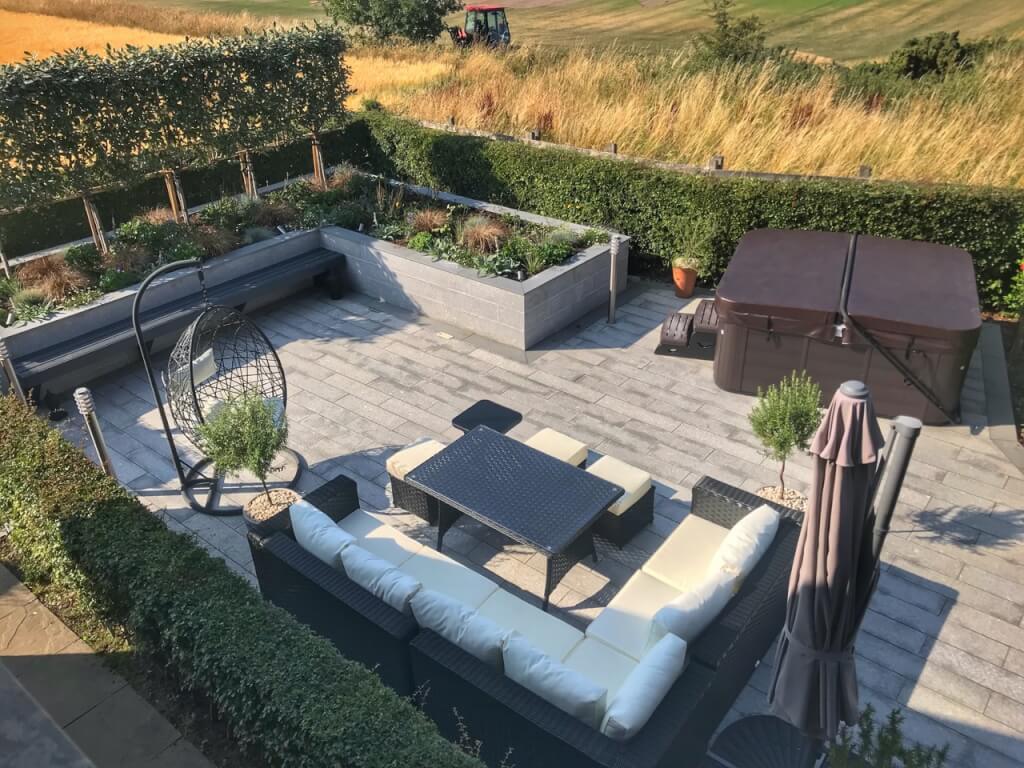
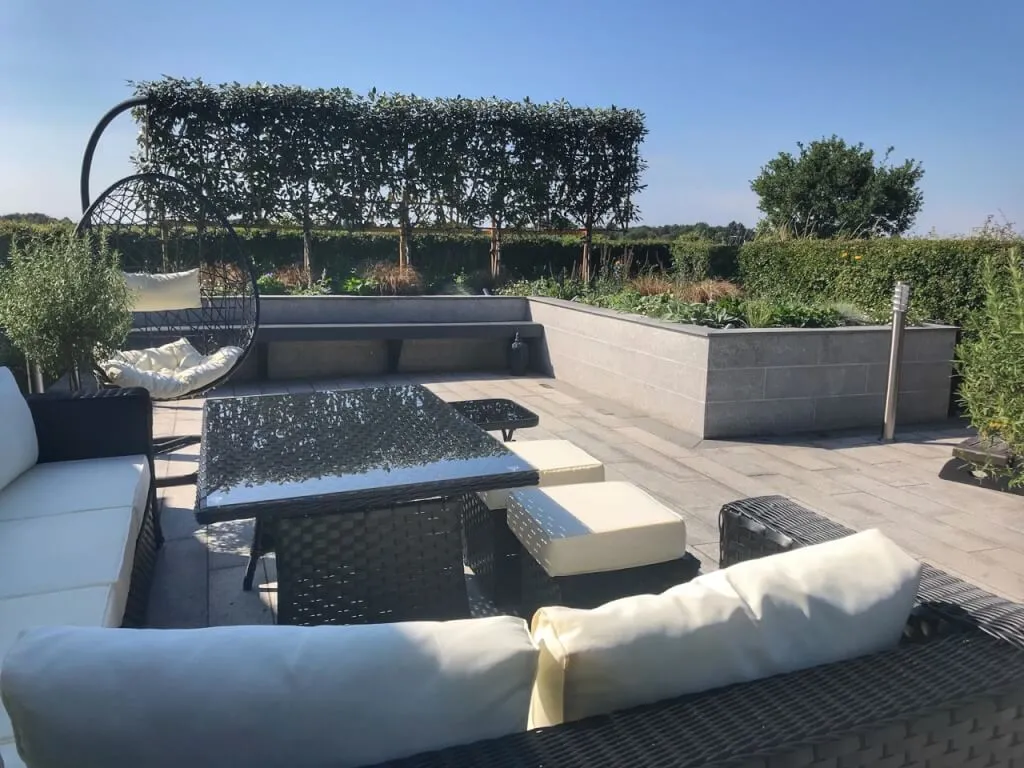
Summary
With outdoor living becoming more popular it's really important that you plan ahead for your space. By using this design guide and following simple rules such as working out the function, planting arrangement and seating areas you can ensure design success.
Unlike interior design, where furniture can be moved around, once you have created planting schemes, it is really hard to just lift and shift them. This is why designing beforehand using a guide will help you avoid costly, time-consuming mistakes. The result is an area that can be used all year round, looks beautiful and can accommodate every social occasion.
So why not get the drinks on ice and get designing?
You can also check out my Youtube channel for more video guides and updates.


